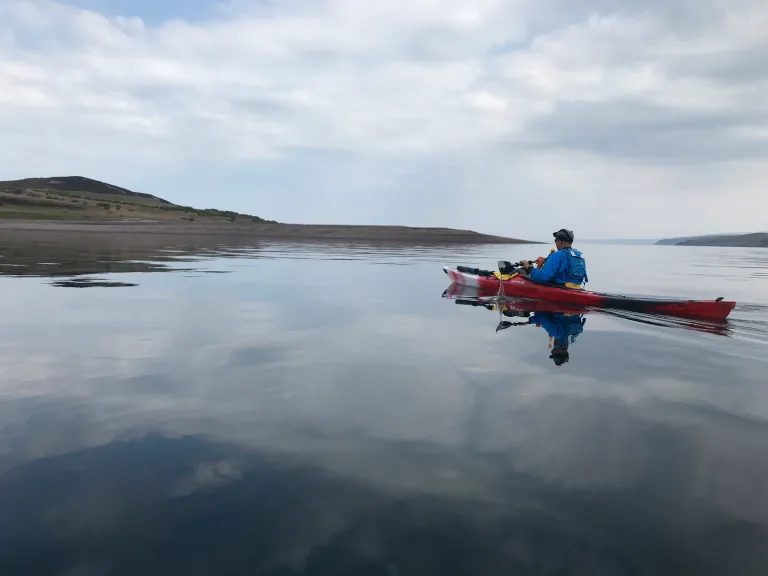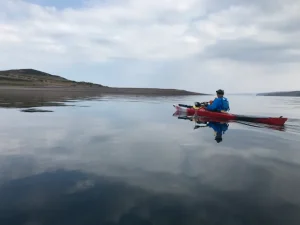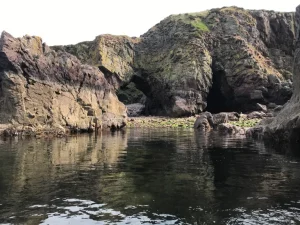Paddle round Anthrax Island
Paddle round Anthrax Island in 2020. Located in Gruinard Bay is Gruinard Island, commonly know as Anthrax Island.
In 1942, during the Second World War, a biological warfare test was carried out on Gruinard by British military scientists from the Biology Department of Porton Down.
Porton Down meteorologist Sir Oliver Graham Sutton was put in charge of a fifty-man team to conduct the trial. The anthrax strain chosen was a highly dangerous. Eighty sheep were taken to the island and bombs filled with anthrax spores were exploded close to where selected groups were tethered. The sheep became infected with anthrax and began to die within days of exposure.
Some of the experiments were recorded on 16 mm colour movie film, which was declassified in 1997.
After the tests were completed, scientists concluded that a large release of anthrax spores would thoroughly pollute German cities, rendering them uninhabitable for decades afterwards. Those conclusions were supported when efforts to decontaminate the island after the experiment failed because the spores were so durable.
In 1945, when the island’s owner sought its return, the Ministry of Supply recognised that the island was contaminated, and so could not be de-requisitioned until it was deemed safe. In 1946, the government agreed to acquire the island and to take responsibility for it. The owner or her heirs would be able to repurchase the island for £500 when it was declared “fit for habitation by man and beast”.
For many years, it was judged too hazardous and expensive to decontaminate the island sufficiently to allow public access, and Gruinard Island was quarantined indefinitely. Visits to the island were prohibited, except for periodic checks by Porton Down personnel to determine the level of contamination.
In 1981 newspapers began receiving messages with the heading “Operation Dark Harvest” which demanded that the government decontaminate the island, and reported that a “team of microbiologists from two universities” had landed on the island with the aid of local people and collected 300 lb (140 kg) of soil.
The group threatened to leave samples of the soil “at appropriate points that will ensure the rapid loss of indifference of the government and the equally rapid education of the general public”. The same day a sealed package of soil was left outside the military research facility at Porton Down; tests revealed that it contained anthrax bacilli. A few days later another sealed package of soil was left in Blackpool, where the ruling Conservative Party was holding its annual conference.
Starting in 1986 a determined effort was made to decontaminate the island: 280 tonnes of formaldehyde solution diluted in sea water was sprayed over all 196 hectares of the island and the worst-contaminated topsoil around the dispersal site was removed. A flock of sheep was then placed on the island and remained healthy.
On 24 April 1990, after 48 years of quarantine and four years after the solution was applied, the island was pronounced safe by the removing the warning signs.
For our other paddling trips please click here to view our website.



Comments are closed